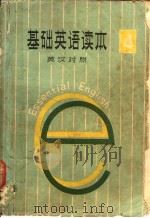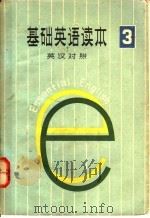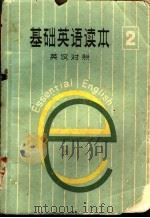《中医基础理论 英汉对照》
| 作者 | 刘燕池主编;刘占文英文主编 编者 |
|---|---|
| 出版 | 北京:学苑出版社 |
| 参考页数 | 423 |
| 出版时间 | 1998(求助前请核对) 目录预览 |
| ISBN号 | 7507712664 — 求助条款 |
| PDF编号 | 88771278(仅供预览,未存储实际文件) |
| 求助格式 | 扫描PDF(若分多册发行,每次仅能受理1册) |
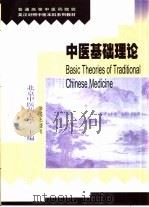
I.Development and Basic Theories of Traditional Chinese Medicine1
1.Basic Concepts and Theories1
2.Development of the Theoretical System1
INTRODUCTION1
1)Long-Term Accumulation of Medical Experience2
2)Infiltration of Ancient Natural Sciences2
3)Influence of Ancient Philosophy3
II.Basic Theories of Traditional Chinese Medicine6
1.Yin and Yang, Five Elements6
2.Visceral Manifestation Theory6
5.Etiology and Pathogenesis7
7.Principles of Treatment and prevention7
6.Pathological Mechanism7
4.Meridian Theory7
3.Qi, Blood, Body Fluid, and Vitality7
III.Characteristics of Traditional Chinese Medicine8
1.Holism8
1)The Body, an Organic Whole8
a.Physiological Aspect9
b.Pathological Aspect10
c.Diagnostic and Therapeutic Aspect11
2)Unification of the Human and Natural World12
a.Physiological Aspect13
b.Pathological Aspect15
c.Diagnostic and Therapeutic Aspects16
2.Treatment Based Upon Syndrome Differentiation18
I.The Basic Concept of the Theory of Yin-Yang21
CHAPTER ONE YIN-YANG AND THE FIVE ELEMENTS21
Section 1 The Theory of Yin-Yang21
II.Development of the Theory of Yin-Yang23
III.Generality and Relativity of the Yin-Yang Property24
IV.Basic Contents of the Yin-Yang Theory26
1.Opposition and Restriction between Yin and Yang26
2.Mutual Dependence and Interaction Between Yin and Yang28
3.Wane-Wax and Equilibrium Between Yin and Yang30
4.Mutual Transformation Between Yin and Yang32
V.The Applications of Yin-Yang Theory in TCM35
1.Explaining the Structure of the Body35
2.Explaining Physiology of the Body36
3.Explaining Pathology of the Body37
4.Application to Clinical Diagnosis and Syndrome Differentiation38
5.Guiding Clinical Treatment and Herb Application39
Section 2 The Theory of Five Elements40
I.The Basic Concept of the Five Elements40
II.The Development of the Theory of the Five Elements41
III.The Property Attribution of the Five Elements42
1.Features of the Five Elements and Attribution Methods42
2.The Significance of the Attribution of the Five Elements44
IV.The Laws of Generation and Restraint, Interaction, Predominance-Recovery, Over-Restraint, and Counter-Restraint Among the Five Elements45
1.Inter-Generation and Inter-Restraint among the Five Elements45
2.The Interaction and Predominance-Recovery among the Five Elements47
1)The interactive regulation among the five elements47
2)The predominance-recovery regulation among the five elements49
3)The inter-over-restraint and inter-counter-restraint among the five elements50
1.Classifying the Body s Structure and Reflecting the Unity between the Internaland ExternaEnvironment52
V.The Application of the Theory of the Five Elements in TCM52
2.Illustrating the Visceral Functions and Mutual Relationships53
3.Generalizing the Laws of Pathogenesis and Transmission54
1)Pathogenesis54
2)The transmission of disease55
4.Use in the Diagnosis and Treatment56
1)Controlling the disease transmission58
2)Determining Principles of treatment58
CHAPTER TWO VISCERAL MANIFESTATION62
Section 1 Introduction62
I.Basic Concept of Visceral Manifestation62
II.The Basis of the Visceral Manifestation Theory62
1.Ancient Antomical Knowledge62
3.The Accumulation of Clinical Experiences63
2.A Long-term Observation of Physiological and Pathological Phenomena63
III.The Main Content of the Viscera Manifestation Theory64
IV.The Characteristics of Visceral Manifestation Theory64
V.Common Physiological Characteristics of Zang-viscera and Fu-Viscera66
Section 2 Five Zang-Viscera66
I.The Heart (Appendix:Pericardium)67
1.Physiological Functions of the Heart67
1)Dominating the Blood Vessels67
2)Dominating the Mind68
2.The Relationship of the Heart to other Organs69
1)Manifestation in the Face69
2)Opening into the Tongue70
Appendix:Pericardium71
2)Correspondence to Summer71
1)Dominating Yang-Qi71
3.Physiological Characteristics of the Heart71
II.The Lung72
1.Physiological Functions of the Lung72
1)Domination of Qi72
2)A Place for Meeting of All Vessels and Coordination Function73
3)Domination of Dispersing and Depurative Descending74
4)Regulation of Water Metabolism76
2.The Relationship of the Lung to other Organs76
1)Correlating with the Skin and Hair76
2)Opening into the Nose77
3)The Throat as a Gateway of the Lung77
3)Correspondence to Autumn78
2)Being aDelicate Organ78
1)As a Florid Canopy78
3.Physiological Characteristics of the Lung78
III.The Spleen79
1.Physiological Function of the Spleen79
1)Dominating Transportation and Transformation79
2)In Charge of Sending up81
3)Commanding the Blood82
2.The Relationship of the Spleen to other Organs82
1)Controlling the Muscles and Limbs82
2)Opening into the Mouth, and Manifestation on the Lips83
3.Physiological Characteristics of the Spleen83
1)Likeness of Dryness and Dislikeness of Dampness83
1)Domination of Conducting and Dispersing84
1.Physiological Functions of the Liver84
3)Correspondence to Late Summer84
2)The Divot Doint of Ascending and Descending Qi84
IV.The Liver84
a.Regulating emotional activities85
b.Aiding digestion and absorption86
c.Promoting the Qi, Blood, and Water Flowing Normally87
2)Storing Blood88
2.The Relationship of the Liver to other Organs89
1)Dominating the Tendons, and Manifestation on the Nails89
2)Opening into the Eyes90
3.Phsiological Characteristics of the Liver91
1)As a Firm-characterized Organ91
1.Physiological Functions of the Kidney92
1)Storing Essence, Dominating Growth, Development and Reproduction92
2)Likeness of Flourish and Smooth, and Dislikeness of Depression92
V.The Kidney(Appendix:the Vital Gate)92
3)Correspondence to Spring92
2)Dominating Water Metabolism96
2.The Relationship of the Kidney to other Organs96
3)Controlling the Reception of Qi97
1)Dominating Bones and Teeth, Engendering Marrow to Fill up the Brain98
2)Manifestations in the Hair99
3)Opening into the Ears, External Genitalia and Anus99
3.Physiological Characteristics of the Kidney100
2.The Vital Gate Resides Between the Two Kidneys101
3.The Theory of the Vital Gate101
1.The Right Kidney as the Vital Gate101
Appendix: The Vital Gate101
4.The Vital Gate as the Motive Power of Qi102
Section 3 The Six Fu-Viscera102
I.The Gallbladder103
1.Storing and Excreting the Bile and Aiding Digestion103
2.Dominating Decision-Making and Relating with Emotions103
II.The Stomach104
1.Receiving of Drink and Food104
2.Decomposition of Food and Drink104
3.Dominating Descending for Maintenance of Health105
III.The Small Intestine105
IV.The Large Intestine106
2.Separation of the Clear and the Turbid106
1.Receiving and Absorbing the Food and Drink106
V.The Urinary Bladder107
VI The Triple-Jiao108
1.In Charge of All Types of Qi108
2.Controlling Transformative Function of Qi108
3.Passage for Water-Fluids109
4.Representing Three Sections of the Human Body109
1)The Upper-jiao as a Fog-generator109
2)The Middle-jiao as a Fermentor109
3)The Lower-jiao as a Drainer110
5.A Concept in Differentiation of Syndrome110
Section 4 Extraordinary Organs110
I.The Brain111
III.The Bone112
IV.The Vessels112
II.The Marrow112
V.The Uterus113
1.Producing Menses113
2.Cultivating the Fetus114
Section 5 The Relationships between the Zang-Viscera and Fu-Viscera114
I.The Relationship Between the Zang-Viscera115
1.The Heart and the Lung115
1)Lung-Qi Aiding the Heart s Function of Propelling Blood115
2)Heart-Blood Transporting Lung-Qi115
2.The Heart and the Spleen116
1)Blood Formation116
2)Blood Circulation116
3.The Heart and the Liver116
4.The Heart and the Kidney117
1)Blood Circulation117
2)Mental and Emotional Activities117
1)The Harmony between the Heart and the Kidney118
2)The Essence and Blood Promoting Each Other118
3)Regulating Mental and Emotional Activities118
5.The Spleen and the Lung118
1)The Formation of Qi118
2)The Water Metabolism119
6.The Lung and the Liver119
7.The Lung and the Kidney120
1)Water Metabolism120
2)Respiration120
1)Digestion121
8.The Liver and the Spleen121
3)The Yin-Fluids of the lung and the Kidney Nourishing Each Other121
2)The Formation, Storage, and Circulation of the Blood122
9.The Spleen and the Kidney122
10.The Liver and the Kidney123
1)Common Source of The Liver and Kidney123
2)Coordination of Yin and Yang in the Liver and Kidney123
II.The Relationships Between the Zang-Viscera and Fu-Viscera124
1.The Heart and the Small Intestine124
2.The Lung and the Large Intestine124
3.The Spleen and the Stomach125
1)Coordination of Ingestion and Transportation and Transformation125
2)Complementary of Ascending and Descending125
4.The Liver and the Gallbladder126
3)Adjustment of Dryness and Dampness126
5.The Kidney and the Bladder127
III.The Relationships Among the Fu-Viscera127
CHAPTER THREE QI, BLOOD, BODY FLUID AND VITALITY130
Section 1 Qi130
I.Concept of Qi130
II.Formation of Qi130
III.Physiological Functions of Qi131
1.Promoting Fucntion131
2.Warming Fucntion131
3.Defending Fucntion131
4.Comsolidating Fucntion132
5.Transforming Function132
IV.Movements of Qi and Their Patterns132
1)Composition and distribution133
V.Classification of Qi133
1.Primordial qi133
2)Physiological Functions134
2.Pectoral qi134
1)Composition and Distribution134
2)Physiological Functions134
3.Nutritive Qi135
1)Composition and Distrbution135
2)Physiological Functions135
4.Defensive Qi135
1)Composition and Distribution135
2)Physiological Functions135
1.Nourishing moistening Function136
III.Physiological Functions136
II.Formation of Blood136
I.Concept of Blood136
Section 2 Blood136
2.Nourishing the Vitality137
IV.Blood Circulation137
Section 3 Body Fluid138
I.Concept of Body Fluid138
II.Formation, Distribution and Excretion of Body Fluid138
1.Formation138
2.Distribution138
3.Excretion139
III.Physiological Functions139
Section 4 Relationship among Qi, Blood and Body Fluid139
3.Consolidating Blood Action of Qi140
2.Propelling Blood Action of Qi140
I.Relationship Between Qi and Blood140
1.Hemopoietic Action of Qi140
4.Blood Being the Mother of Qi141
II.Relationship Between Qi and Body Fluid141
1.Generating Fluid Action of Qi141
2.Circulating Fluid Action of Qi141
3.Consolidating Fluid action of Qi141
4.Carrying Qi Action of Fluid142
III.Relationship Between Blood and Body Fluid142
Section 5 Vitality142
I.Concept and Development of Vitality142
II.Mental Activities and Their Relation to Five Zang-Viscera143
III.Emotional Activities and Their Relation to Five Zang-Viscera144
I.The Concept of The Meridians145
II.The Concept of The Meridian System145
CHAPTER FOUR MERIDIANS145
Section 1 The Concept and Composition of the Meridians145
Section 2 The Twelve Regular Meridians147
I.Nomenclature and Names147
II.The Courses, Connections, Distributions, Interior-Exterior Relationships and Cyclical Flow of Meridians149
1.Rules of Courses and Connections149
2.Rules of Distribution149
3.Interior-Exterior Relationships150
4.The Order of Cyclical Flow151
Section 3 The Eight Extra Meridians151
I.The Characteristics and Functions of the Eight Extra Meridians151
II.The Functions of the Eight Extra Meridians152
Section 4 Divergent Meridians, Collaterals, Meridian Tendon and Skin Areas153
I.Divergent Meridians153
II.Collaterals154
III.Meridian Tendons155
IV.Skin Areas155
Section 5 The Physiology of Meridians and Application of Meridian Theory156
I.The Physiological Functions of Meridians and Collaterals156
1.Linking up the Exterior with the Interior and the Upper with the Lower,Connecting the Viscera and Organs156
1)The Connection of the Viscera with the Extremities157
2)The Connection of the Viscera with the Five Sense Organs and Nine Orifices157
3)The Connections Between the Viscera157
4)The Connections Between Meridians157
4.Regulating the Balance158
3.Respones and Conducting Functions158
2.Circulating Qi and Blood, Nourishing the Viscera and Tissues158
II.Application of Meridian Theory159
1.Explaining the Pathological Changes159
2.Guiding the Diagnosis and Treatment of Diseases159
1)Directing the Diagnosis of Diseases159
2)Guiding the Treatment160
CHAPTER FIVE ETIOLOGY AND PATHOGENESIS162
Section 1 Etiology162
I.The Six Climatic Evils163
1.Wind165
2.Cold166
3.Summer-Heat168
4.Dampness169
5.Dryness170
6.Fire(Heat)171
II.Pestilential Evils173
III.Seven Emotions174
1.The Relationship of The Seven Emotions to the Qi, Blood, and Viscera174
2.The Pathogenic Features of the Seven Emotions174
1)Directly Impairing the Viscera175
2)Affecting the Functions of the Visceral Qi176
3)Deteriorating Effects of Emotional Instability177
IV.Diet, Work and Rest177
1.Improper Food and Drink177
1)Over-Hunger and Over-Intake177
3)Food and Drink Preference178
a.Food and drink being too cold or hot178
2)Unclean Food and Drink178
b.Preference for particular flavors of food and drink179
2.Impairment due to Overstrain and Over-Ease179
1)Overstrain179
2)Over-Ease180
V.Trauma180
VI.Retention of Phlegm and Fluid and Stagnant Blood182
1.Retention of Phlegm and Static Fluid182
2.Stagnant Blood183
Section 2 Pathogenesis184
I.The Basis Concepts of the Occurrence of Disease184
II.Principles of the Occurrence of Disease185
1.Disease--The Result of theStruggle Between the Genuine-Qi and the Evil-Qi185
2)When the Evil-Qi Gets a Chance to Attack the Body, the Body s Genuine-Qi Must Be Weak186
1)When the Geuine-Qi Keeps Itself Inside the Body, the Evil-Qi will Be Unable to Attack186
2. Deficiency of the Genuine-qi --The Internal Cause of Disease186
3.The Evil-Qi--The Important Condition of Disease187
III.Constitution, Mental State, Environment, Nutrition, and Physical Activities--Their relation to Disease188
1.Constitution188
2.The Mental State189
3.Environment189
4.Nutrition and Physical Activities190
IV.The General Rule of the Occurrence and Development of Disease191
1.Pathogenic Routes and Pathogenic Sites191
1)The External Pathogenic Route191
2)The Internal Pathogenic Route192
3)Traumatic Pathogenic Route193
2.Development and Transmission of Disease193
Section 1 Basic Pathological Mechanism196
CHAPTER SIX PATHOLOGICAL MECHANISM196
I.Prosperity and Decline of the Evil-Qi and the Genuine-Qi197
1.Prosperity and Decline of the Evil-Qi and the Genuine-Qi and Their PathologicalChanges in Deficiency and Excess197
2.Prosperity and Decline of the Evil-QI and the Genuine-Qi and the Development of Disease199
1)Prevalence of the Genuine-Qi with Abatement of the Evil-Qi199
2)Preponderance of the Evil-Qi with Debilitation of the Genuine-Qi199
II.Imbalance Between Yin and Yang200
1.Relative Exuberance of Yin or Yang201
1)Exuberance of Yang201
2)Exuberance of Yin202
2.Relative Deficiency of Yin or Yang203
1)Deficiency of Yang203
1)Impaired Yin Affecting Yang204
2)Deficiency of Yin204
3.Mutual Impairment of Yin and Yang204
2)Impaired Yang Affecting Yin205
4.Repellency Between Yin and Yang205
1)Excessive Yin Repelling Yang or Upward Floating of Yang205
2)Excessive Yang Repelling Yin206
5.Depletion of Yin and Yang206
1)Yang Depletion206
2)Yin Depletion206
III.Disturbance of Qi and Blood207
1.Disturbance of Qi208
1)Deficiency of Qi208
2)Disturbance of Activity of Qi208
a.Qi stagnation209
b.Reversed flow of qi210
c.Qi sinking210
d.Qi blockage and qi collapse211
2.Disturbance of Blood211
1)Blood Deficiency211
2)Blood Stasis212
3)Over-Heat of the Blood212
4)Extravascular Flow of Blood213
3.Disturbances of Qi and Blood Interaction213
1)Qi Stagnation and Blood Stasis214
2)Failure of Qi to Control Blood214
IV.Abnormal Metabolism of Body Fluids215
5)Qi and Blood Failing to Nourish the Meridians215
4)Deficiency of Both Qi and Blood215
3)Qi Collapse Following Massive Bleeding215
1.Insufficiency of the Body Fluids216
2.Disturbance of Distribution and Excretion of Body Fluids216
3.Disturbance of Body Fluid and Qi and Blood218
1)Retention of Body Fluid and Obstruction of Qi218
2)Qi Collapse Following Massive Loss of Body Fluids219
3)Exhaustion of body Fluids and Blood219
4)Deficiency of Body Fluid and Blood Stasis219
Section 2 The Pathological Mechanism of Exogenous Febrile Diseases219
I.Pathological Mechanism of the Six Meridians220
1.Patholigilal Mechanism of Taiyyang Disease221
2.Pathological Mechanism of Yangming Disease222
3.Pathological Mechanism of Shaoyyang Disease224
4.Pathological Mechanism of Taiyyin Disease225
5.Pathological Mechanism of Shaoyyin Disease225
6.Pathological Mechanism of Jueyyin Disease227
II.Pathological Mechanism of Wei-Qi-Ying-Xue228
1.Pathological Mechanism of Wei-Stage229
2.Pathological Mechanism of Qi-Stage229
3.Pathological Mechanism of Ying-Stage231
4.Pathological Mechanism of Xue-Stage231
III.Pathological Mechanism of Triple-Jiao232
1.Pathological Mechanism of Upper-Jiao Damp-Heat233
2.Pathological Mechanism of Middle-Jiao Damp-Heat234
3.The Pathological Mechanism of Lower-Jiao Damp-Heat235
Section 3 The Pathological Mechanism of the Five Endogenous Evils236
2.Extreme Heat Causing Wind237
I.Wind-Qi Stirring Within237
1.Transformation of Liver-Yang into Wind237
3.Yin Deficiency Causing Wind238
4.Blood Deficiency Causing Wind238
II.Endogenous Cold238
III.Damp-Turbidity Encumbered Within the Body239
IV.Impairment of Body Fluids Transformed into Dryness241
V.Endogenous Fire-Heat242
Section 4 Pathological Mechanisms of the Zang-Viscera and Fu-Viscera243
I.Pathological Mechanism of the Five Zang-Viscera245
1.Pathological Mechanism of the Heart245
1)Disorder of Heart-Yang and Heart-Qi246
a.Excess of the heart yang-qi246
b.Deficiency of the heart yang-qi247
b.Impairment of heart-blood249
c.Stagnation of heart-blood249
2)Disturbance in Heart-Yin and Heart-Blood249
a.Insufficienal of heart-yin249
2.Pathological Mechanism of the Lung250
1)Abnormality of Lung-Qi250
a.Disorders of lung-qi dispersing and depurative descending251
b.Insufficiency of Lung-qi251
2)Disorder of Lung-Yin252
3.Pathological Mechanism of the Spleen252
1)Disorder of Spleen-Yang and Spleen-Qi253
a.Deficiency of spleen-qi253
b.Deficiency of spleen-yang253
2)Disorder of Spleen-Yin254
c.Water accumulating in middle-jiao254
1)Disorders of Liver-Yang and Liver-Qi255
4.Pathological Mechanism of the Liver255
a.Stagnation of liver-qi256
b.Transverse inversion of liver-qi256
c.Flaming up of the liver-fire256
2)Disturbance of Liver-Yin and Liver-Blood257
a.Insufficiency of Liver-blood257
b.Hyperactivity of liver-yang257
c.Stirring of the liver wind258
5.Pathological Mechanisms of the Kidney258
1)Insufficiency of the Essence-Qi in the Kidney259
a.Deficiency of the kidney-essence259
a.Deficiency of kidney-yin260
b.Deficiency of kidney-yang260
2)Disturbance of Kidney-Yin and Kidney-Yang260
b.Unconsolidation of kidney-qi260
c.Hyperactivity of ministerial fire261
II Pathological Mechanisms of Six Fu-Viscera261
1.Pathological Mechanisms of the Gall Bladder261
2.Pathological Mechanism of the Stomach262
1)Disturbance of the Stomach Yang-Qi262
2)Disturbance of Stomach-Yin263
3.Pathological Mechanism of the Small Intestine263
4.Pathological Mechanism of the Large Intestine264
5.Pathological Mechanism of the Urinary Bladder265
6.Pathological Mechanism of Triple-Jiao265
2.Pathological Mechanism of the Marrow and Bones266
III. Pathological Mechanism of Extraordinary Organs266
1.Pathological Mechanism of the Brain266
3.Pathological Mechanism of the Vessels267
4.Pathological Mechanism of the Uterus267
1)Disorder of Qi and Blood Leadeng to Dysfunctions of the Uterus267
2)Dydfunctions of the Heant, Spleen and Kidney leadeng to the Dysfunctions of Uterus268
3)Disorder of Chong and Ren Meridians Leadig to the Dysfunctions of Uterus269
CHAPTER SEVEN PRINCIPLES OF TREATMENT AND PREVENTION270
Section 1 Prevention270
I.Prevention of the Occurrence of Diseases271
1.Taking Physical Exercises and Building up a Good Physique271
2.Taking Care of the Body, Avoiding Over-exertion271
3.Tranquilizing the brain and Keeping Optimistic272
II.Prevention of Progresses of Diseases273
4.Herbs Used for Medicinal Prevention273
Section 2 Principles of Treatment274
I.Treating the Root and Distinguishing the Primary vs the Secondary and Urgent vs Less Urgent275
1.Distinguishing Root vs Branch, Urgent vs the Less Urgent275
1)Treating the Branch First in Emergency Case276
2)Treating the Branch in Less Urgent Case277
3)Treating the Root and the Branch Simultaneously277
2.Routing Treatment and Contrary Treatment278
II Strengthening the Genuine-Qi and Eliminating the Evil-Qi, Correctly Handling the Relationship Between Them280
1.Strengthening the Genuine-qi to Dispel the Evil-qi281
2.Removing the Evil-qi to Help the Genuine-qi281
5.Elimination and Reinforcement in Combination282
4.Tonifying First and then Eliminating282
3.Eliminating First and then Tonifying282
III.Paying Attention to the Integrity, Correctly Handling the Relationship Between the Local and the Whole283
1.Regulating Yin and Yang283
1)Reducing the Redundant283
2)Reinforcing the Deficient284
2.Regulating Functions of Viscera285
3.Regulating Qi and Blood285
IV. Treatments in Correspondence to Seasons, Geographical Envircnment and Individuality286
1)Treatment in Correspondence to Seasons286
2)Treatment in Correspondence to Geographical Environment287
3)Treatment in Correspondence to Individuality288
一、中医学和中医基础理论的概念、形成与发展291
绪论291
二、中医基础理论的主要内容293
三、中医学的基本特点294
(一)整体观念294
1.人体是统一的有机整体295
2.人与自然界的统一关系296
(二)辨证论治299
第一章 阴阳、五行302
第一节 阴阳学说302
一、阴阳学说的基本概念302
二、阴阳学说的形成及沿革303
三、阴阳属性的普遍性和相对性304
四、阴阳学说的基本内容305
(一)阴阳的对立制约305
(二)阴阳的互根互用306
(三)阴阳的消长平衡307
(四)阴阳的相互转化308
五、阴阳学说在中医学中的应用309
(一)说明人体的组织结构309
(二)说明人体的生理功能309
(三)说明人体的病理变化310
(四)用于临床诊法辨证311
(五)指导临床治疗用药311
第二节 五行学说311
一、五行学说的基本概念311
二、五行学说的形成与沿革312
三、五行的属性归类312
(二)五行归类的意义313
(一)五行的特性及归类方法313
四、五行的生克、制化、胜复、乘侮规律314
(一)五行的相生、相克314
(二)五行的制化、胜复315
1.五行的制化调节315
2.五行的胜复调节316
(三)五行的相乘、相侮317
五、五行学说在中医学中的应用318
(一)归属人体组织结构,反映内外环境统一318
(二)说明脏腑生理功能与某些相互联系318
(三)概括脏腑病变的某些发病和传变规律319
(四)用于疾病的诊断与治疗320
(二)长期对生理、病理现象的观察323
(一)古代解剖学知识323
二、藏象学说形成的基础323
第一节 概述323
第二章 藏象323
一、藏象和藏象学说的基本概念323
(三)经过验证的丰富的临床经验总结324
三、藏象学说的主要内容324
四、藏象学说的特点324
第一节 五脏325
一、心325
(一)心的生理功能326
1.主血脉326
2.主神志326
(三)心的生理特性327
二、肺327
附:心包络327
1.其华在面327
2.开窍干舌327
(二)心与其它组织器官的关系327
(一)肺的生理功能328
1.肺生气328
2.朝百脉328
3.主宣发与肃降329
4.肺对水液代谢的调节作用329
(二)肺与其它组织器官的关系329
1.外合皮毛329
(一)脾的生理功能330
三、脾330
1.主运化330
3.喉为肺之门户330
(三)肺的生理特性330
2.开窍于鼻330
2.脾气主升331
3.主统血332
(二)脾与其它组织器官的关系332
1.主肌肉、四肢332
2.开窍于口,其华在唇332
(三)脾的生理特性332
四、肝333
(一)肝的生理功能333
1.主疏泄333
2.主藏血334
(二)肝与其它组织器官的关系335
1.主筋,其华在爪335
2.开窍于目335
(三)肝的生理特性335
五、肾336
(一)肾的生理功能336
1.藏精,主生长、发育与生殖336
2.主水液337
3.主纳气338
(二)肾与其它组织器官的关系338
1.主骨,生髓,通于脑,齿为骨之余338
(二)肾的生理特性339
附:命门339
2.其华在发339
3.开窍于耳及二阴339
第三节 六腑340
一、胆340
(一)贮藏、排泄胆汁,助消化341
(二)主决断,与情志活动有关341
二、胃341
(一)主受纳水谷341
(二)主腐熟水谷341
(三)主通降341
(二)泌别清浊342
五、膀胱342
四、大肠342
(一)受盛饮食物342
三、小肠342
六、三焦343
(一)主持诸气343
(二)总司人体气化343
(三)为水液运行之道路343
第四节 奇恒之腑344
一、脑344
二、髓344
三、骨344
四、脉345
五、女子胞345
(三)心与肝346
(一)心与肺346
(二)心与脾346
第五节 脏腑之间的关系346
一、脏与脏的关系346
(四)心与肾347
(五)脾与肺347
(六)肺与肝348
(七)肺与肾348
(八)肝与脾348
(九)脾与肾349
(十)肝与肾349
二、脏与腑的关系349
(一)心与小肠349
(四)肝与胆350
(五)肾与膀胱350
(三)脾与胃350
(二)肺与大肠350
三、腑与腑的关系351
第三章 气、血、津液、精神352
第一节 气352
一、气的概念352
二、气的生成352
三、气的生理功能352
(一)推动作用352
(二)温煦作用352
(三)防御作用353
(四)固摄作用353
(五)气化作用353
四、气的运动和运动形式353
(四)卫气354
(二)宗气354
(三)营气354
五、气的分布与分类354
(一)元气354
第二节 血355
一、血的概念355
二、血的生成355
三、血的生理功能355
(一)营养和滋润作用355
(二)血能养神355
四、血的运行355
二、津液的生成、输布和排泄356
第三节 津液356
一、津液的概念356
三、津液的功能357
第四节 气、血、津液之间的相互关系357
一、气和血的关系357
(一)气能生血357
(二)气能行血357
(三)气能摄血357
(四)血为气母357
三、血和津液的关系358
(四)津能载气358
一、精神活动的概念及其产生358
第五节 精神358
(三)气能摄津358
(二)气能行(化)津358
(一)气能生津358
二、气和津液的关系358
二、神志活动的表现及其与五脏的关系359
三、神志活动的表现及其与五脏的关系359
第四章 经络361
第一节 经络的概念和经络系统的组成361
一、经络的概念361
二、经络系统的组成361
附:经络系统简表362
第二节 十二经脉362
一、命名原则及名称362
二、走向、交接、分布、表里关系及流注次序363
三、循行部位:从略364
第三节 奇经八脉364
一、奇经八脉的特点和作用364
二、奇经八脉的基本功能365
三、奇经八脉的循行部位:从略365
第四节 经别、别络、经筋、皮部365
一、经别365
二、别络366
三、经筋366
四、皮部366
第五节 经络的生理及经络学说的应用367
一、经络的生理功能367
二、经络学说的应用368
第一节 病因369
一、六淫369
第五章 病因与发病369
(一)风370
(二)寒370
(三)暑371
(四)湿371
(五)燥372
(六)火372
二、疠气373
三、七情内伤373
(一)七情与内脏气血的关系374
(二)七情致病的特点374
2.饮食不洁375
(二)劳逸损伤375
3.饮食偏嗜375
(一)饮食不节375
1.饥饱失常375
四、饮食、劳逸375
1.过劳376
2.过逸376
五、外伤376
六、痰饮、瘀血376
(一)痰饮377
(二)瘀血377
(二) 正气虚 是疾病发生的内在根据378
二、发病的基本原理378
(一)疾病的发生是 正邪相争 、 正不胜邪 的结果378
一、发病的基本概念378
第二节 发病378
(三)致病邪气是发病的重要条件379
三、体质、精神状态、生活环境、营养和锻炼与疾病发生的关系379
(一)体质因素379
(二)精神状态380
(三)生活环境380
(四)营养和锻炼380
四、疾病发生、发展的一般规律380
(一)发病途径及病变部位381
(二)疾病的发展与传变382
(一)邪正盛衰与虚实的病理变化383
一、邪正盛衰383
第一节 基本病机383
第六章 病机383
(二)邪正盛衰于疾病的趋向和转归384
1.正胜则邪却384
2.邪胜则正衰384
二、阴阳失调384
(一)阴阳偏盛385
1.阳盛385
2.阴盛385
(二)阴阳偏衰386
1.阳虚386
2.阴虚386
(三)阴阳互损386
1.阴损及阳386
(五)阴阳亡失387
2.阳盛格阴387
2.亡阴387
1.亡阳387
(四)阴阳格拒387
2.阳损及阳387
1.阴盛格阳或戴阳387
三、气血失常388
(一)气的失常388
1.气虚388
2.气机失调388
(二)血的失常390
1.血虚390
2.血瘀390
3.血热390
4.血液妄行390
3.气随血脱391
5.气血不荣经脉391
4.气血两虚391
(三)气血互根互用功能失调391
2.气不摄血391
1.气滞血瘀391
四、津液代谢失常392
(一)津液亏损不足392
(二)津液输布排泄障碍392
1.湿浊困阻392
2.水液贮留392
第二节 外感热病病机393
4.津亏血瘀393
2.气随液脱393
3.津枯血燥393
1.水停气阻393
(三)津液与气血功能失调393
3.痰饮凝聚393
一、六经病机394
(一)太阳病机394
(二)阳明病机395
(三)少阳病机395
(四)太阴病机395
(五)少阴病机396
(六)厥阴病机396
二、卫气营血病机397
(一)卫分病机397
(二)气分病机397
三、三焦病机398
(四)血分病机398
(三)营分病机398
(一)上焦湿热病机399
(二)中焦湿热病机399
(三)下焦湿热病机400
第三节 内生 五邪 病机400
一、风气内动400
(一)肝阳化风400
(二)热极生风401
(三)阴虚风动401
(四)血虚生风401
二、寒从中生401
三、湿浊内困401
四、津伤化燥402
五、火热内生402
第四节 脏腑病机403
一、五脏病机404
(一)心的病机404
1.心阳心气的失调404
2.心阴心血的失调405
(二)肺的病机406
1.肺气的失调406
2.肺阴的失调407
(三)脾的病机407
1.脾阳脾气的失调407
2.脾阴的失调408
(四)肝的病机408
1.肝阳肝气的失调408
(五)肾的病机409
2.肝阴肝血的失调409
1.肾的精气不足410
2.肾的阴阳失调410
二、六腑病机411
(一)胆的病机411
(二)胃的病机411
1.胃的阳气失调411
2.胃阴失调411
(三)小肠病机412
(四)大肠病机412
(五)膀胱病机412
(六)三焦病机412
(四)女子胞病机413
(三)脉的病机413
(二)髓与骨的病机413
三、奇恒之腑病机413
(一)脑的病机413
第七章 防治原则415
第一节 预防415
一、未病先防415
(一)加强锻炼,增强体质415
(二)调养形体,不妄作劳416
(三)调养精神,保持乐观416
(四)药物预防,广泛投药416
二、既病防变416
第二节 治则417
一、治病求本,分清主次缓急417
(一)标本缓急417
(一)扶正以祛邪419
(二)正治、反治419
二、扶正祛邪,正确处理正与邪的关系419
(二)祛邪以扶正420
(三)先攻后补420
(四)先补后攻420
(五)攻补兼施420
三、重视整体,正确处理局部和整体的关系420
(一)调整阴阳420
(二)调整脏腑功能421
(三)调理气血422
四、因时、因地、因人制宜422
(一)因时制宜422
(二)因地制宜422
(三)因人制宜423
1998《中医基础理论 英汉对照》由于是年代较久的资料都绝版了,几乎不可能购买到实物。如果大家为了学习确实需要,可向博主求助其电子版PDF文件(由刘燕池主编;刘占文英文主编 1998 北京:学苑出版社 出版的版本) 。对合法合规的求助,我会当即受理并将下载地址发送给你。
高度相关资料
-
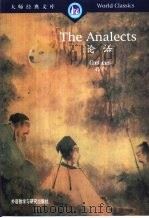
- 论语 英汉对照
- 1998 外国语教学与研究出版社
-
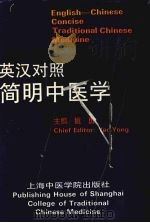
- 简明中医学 英汉对照
- 上海中医学院出版社
-
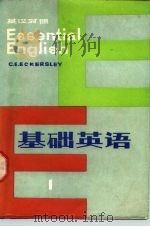
- 基础英语(英汉对照) 第一册
- 1983年10月第1版 陕西人民出版社
-

- 全国地表水水质评价
- 1984
-

- 中医基础理论
- 2020 济南:山东科学技术出版社
-
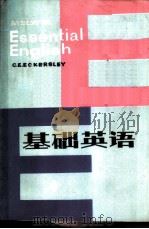
- 基础英语 英汉对照 第4册
- 1984 西安:陕西人民出版社
-
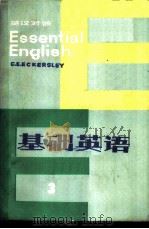
- 基础英语 英汉对照 第3册
- 1984 西安:陕西人民出版社
-
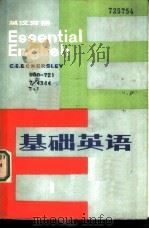
- 基础英语 英汉对照 第1册
- 1983 西安:陕西人民出版社
-
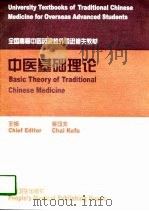
- 中医基础理论
- 1998 北京:人民卫生出版社
-
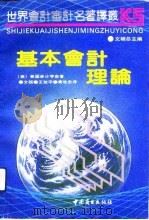
- 基本会计理论 汉英对照
- 1991 北京:中国商业出版社
-
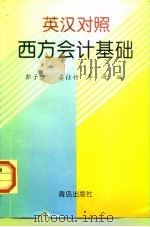
- 西方会计基础 英汉对照
- 1996 青岛:青岛出版社
-
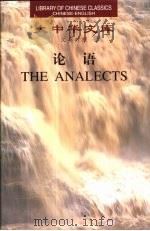
- 论语 汉英对照
- 1999 长沙:湖南人民出版社;北京:外文出版社
提示:百度云已更名为百度网盘(百度盘),天翼云盘、微盘下载地址……暂未提供。➥ PDF文字可复制化或转WORD
